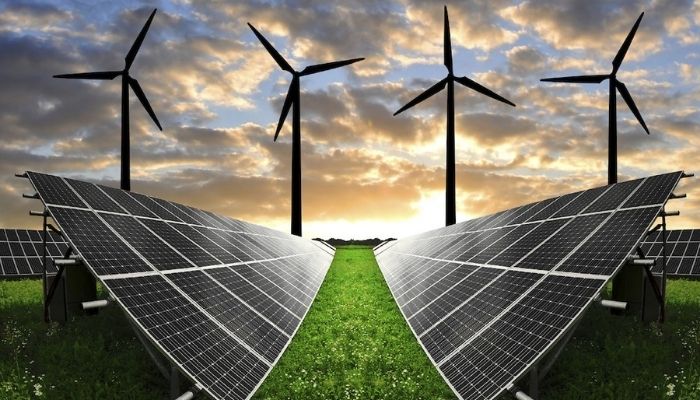By Bonface Orucho
Foreign investment in Africa’s clean energy sector remained robust in 2023, fueling the continent’s growing sustainability momentum, according to a new report.
The report, ‘The World Investment Report by the UN Trade and Development,’ unveiled on June 20, shows a growing share of global greenfield megaprojects, particularly in clean energy, announced in Africa in 2023.
This is despite overall FDI inflows into the continent falling by 3% to US$53 billion, consistent with global trends where FDIs declined by 2% to US$1.3 trillion, with the impact felt most in developing economies, which suffered a 7% drop.
“The value of greenfield projects announced in Africa fell to $175 billion, from $196 billion in 2022. However, most countries registered increases in project numbers, with the overall number of project announcements in the region rising by 7 per cent to more than 800,” the report explains.
According to the report, 6 of the greenfield megaprojects announced in Africa last year are valued more than US$5 billion.
Mauritania’s AMAN green hydrogen project was the largest greenfield project announced globally in 2023. The project aims to generate 30 GW from wind and solar. It is being developed on an 8500 km² site in northern Mauritania by CWP Global’s subsidiary, CWP Terra.
The project is well underway, with CWP Global’s website indicating it is moving to the pre-FEED stage. An MOU with the government has initiated the second phase of the resource measurement campaign.
“It is expected to generate US$34 billion in investment (several multiples of the country’s gross domestic product),” the UNCTAD report explains.
Other greenfield megaprojects were announced in Egypt at The Suez Canal Economic Zone and in other locations within Egypt, totalling US$10.8 billion. While Mauritania and Egypt garnered the lion’s share of megaprojects, several other countries across the continent pulled int substantial amounts.
“Three energy producers separately announced green hydrogen projects in South Africa totalling $7.1 billion, and there was substantial investment in Morocco as well,” the report explained.
Beyond green hydrogen megaprojects, e-mobility is also attracting significant foreign investment. Last year, for instance, Chinese lithium-ion battery manufacturer Gotion High Tech announced a US$6 billion investment in a 100-gigawatt-hour EV battery plant in Morocco.
Gotion is backed by Germany auto manufacturer, Volkswagen in this project to be located in Kenitra, Morocco.
Besides, foreign investors are increasingly targeting the solar and wind energy sector, which attracted US$10.8 billion in project finance, primarily in Egypt, South Africa, and Zimbabwe.
Also, investments in chemicals and electronics recorded some of the largest year-to-year increases in project values with a US$13 billion and US$7.6billion rise, respectively.
However, project values for electricity and gas supply projects dropped by US$33 billion compared with 2022, their drop is responsible for the overall decline in greenfield values.
“If executed, these projects could generate an additional 200,000 jobs in the region,” the report explains.
Foreign investors interested in the continent are primarily based in Europe, while investors in the United States and the United Kingdom also came to the table. Leading from Asia are China and Singapore.
In terms of targeted regions, North Africa saw a 12% decline in foreign investment value, while West Africa experienced a 1% dip. The greenfield investment in West Africa was significantly shaped by the announcement of the US$34-billion green hydrogen project in Mauritania.
While FDIs declined by 17% in Central Africa, there was a 56% increase in the number of greenfield projects and a 119% rise in their value.
In East Africa, Ethiopia witnessed a 11% decrease in inflows resulting in a 3% drop in this region. However, greenfield projects and international project finance deals increased by more than 30%, indicating better prospects ahead.
In southern Africa, fluctuations in Angola continued to influence trends. Inflows to South Africa decreased by 43% despite higher mergers and acquisitions activity.
The African Continental Free Trade Agreement (AfCFTA) Investment Protocol adopted in 2023 is expected to contribute to growing intraregional FDI.
“The share of intraregional projects, though still relatively low, is higher in services and selected manufacturing industries (with 20 per cent of projects by investors from Africa) than in resource-based processing industries (with only 13 per cent of projects originating from the region…),” the report highlights.
“This indicates the pool of investors undertaking projects within the region is large for some sectors. Also, there is an opportunity to expand intraregional investment in processing industries as part of the general drive to increase value addition,” the authors further explained.
bird story agency
Foreign investment in Africa's clean energy sector remained strong in 2023, supporting the continent's sustainability efforts despite a 3% decline in overall Foreign Direct Investment (FDI) to US$53 billion. The "World Investment Report by the UN Trade and Development" highlighted an increase in greenfield megaprojects, notably in clean energy, with project announcements rising by 7% to over 800.
Mauritania's AMAN green hydrogen project, valued at US$34 billion, was the largest globally, aiming to generate 30 GW from wind and solar. Other significant projects included US$10.8 billion in Egypt's Suez Canal Economic Zone and three projects in South Africa totaling US$7.1 billion. Additionally, Chinese firm Gotion High Tech announced a US$6 billion investment in an EV battery plant in Morocco.
Solar and wind energy investments also surged, mainly in Egypt, South Africa, and Zimbabwe, while investments in chemicals and electronics saw large year-to-year increases. However, a US$33 billion drop in electricity and gas supply project values contributed to the overall decline in greenfield investments.
Regional FDI trends varied, with North Africa, West Africa, and Central Africa experiencing declines in investment value, but Central Africa saw a significant increase in the number and value of greenfield projects. East Africa and Southern Africa faced mixed trends, with Ethiopia seeing a decrease while international project finance deals increased.
The African Continental Free Trade Agreement (AfCFTA) is expected to boost intraregional FDI, particularly in services and selected manufacturing industries. The report underscores the potential growth in intraregional investment within processing industries to enhance value addition.






